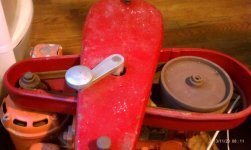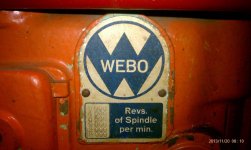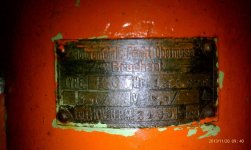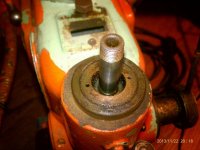joem64
Plastic
- Joined
- Nov 12, 2013
- Location
- new jersey
I picked up a vintage German mini drill press this morning for $20 made by WEBO. The side plate shows the different speeds the bit can turn at, but when I open up the top there is only a single drive pulley and a bit pulley. I was expecting to see a stack of various pulleys for the various speeds. Is there some other way to change speeds on these things? This thing must weigh all of 100 lbs (btw not sure if I'm in the right forum...I'm guessing this drill press is more vintage as opposed to antique) thanks for any thoughts/help/info in advance if any can share.

















 )
) 




 I noticed that it appears as though the motor pulley might flip over to a smaller diameter? Does that sound reasonable ? Would that suggest there were a set of 3 pulleys on the spindle side ? I got the pulley removed from the spindle side (that weird nut threaded off, as some suggested) I have no clue what I'm looking at.. do these added pics confirm or refute any further incite into how this drill reaches top speed ?
I noticed that it appears as though the motor pulley might flip over to a smaller diameter? Does that sound reasonable ? Would that suggest there were a set of 3 pulleys on the spindle side ? I got the pulley removed from the spindle side (that weird nut threaded off, as some suggested) I have no clue what I'm looking at.. do these added pics confirm or refute any further incite into how this drill reaches top speed ?


